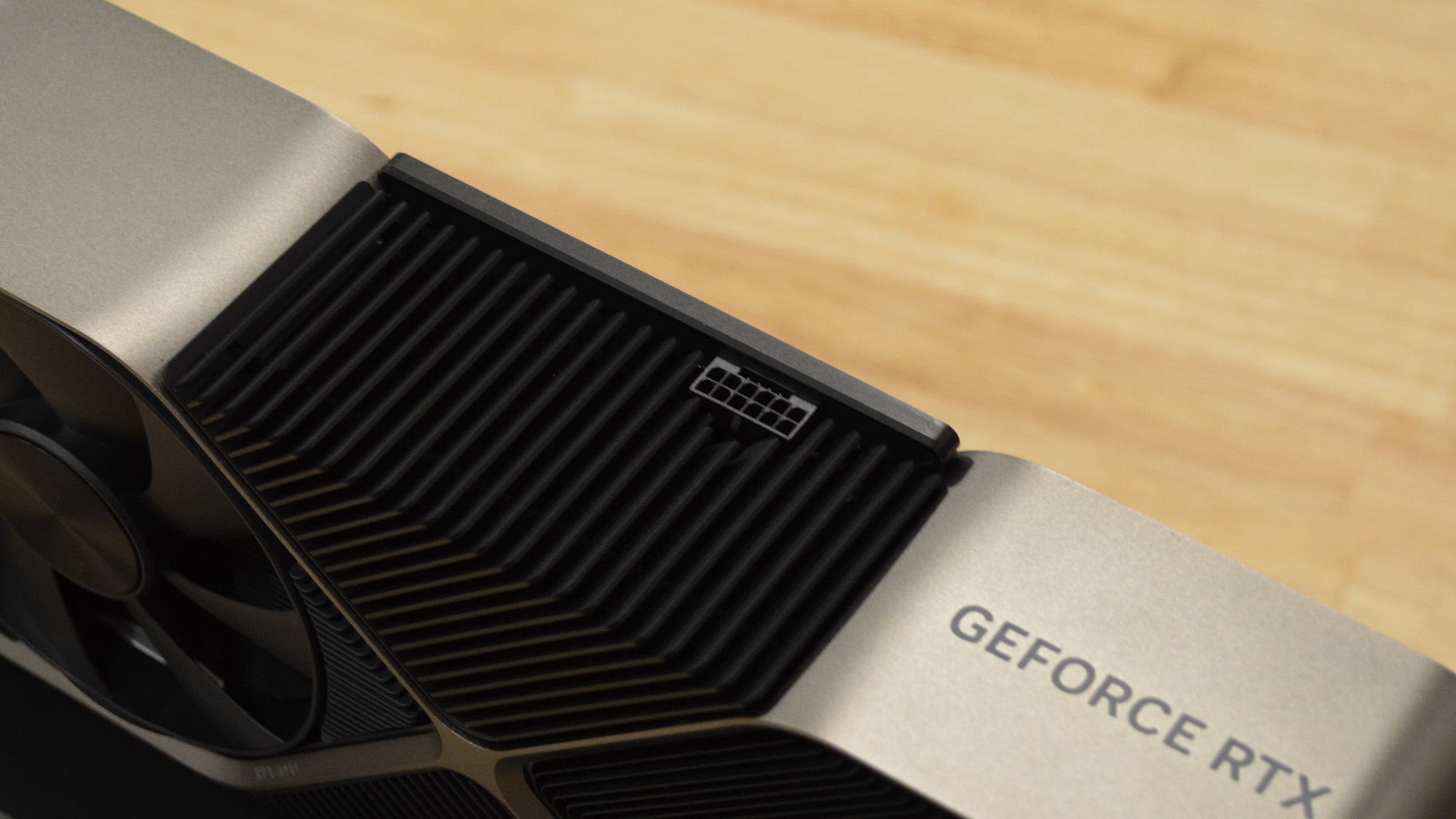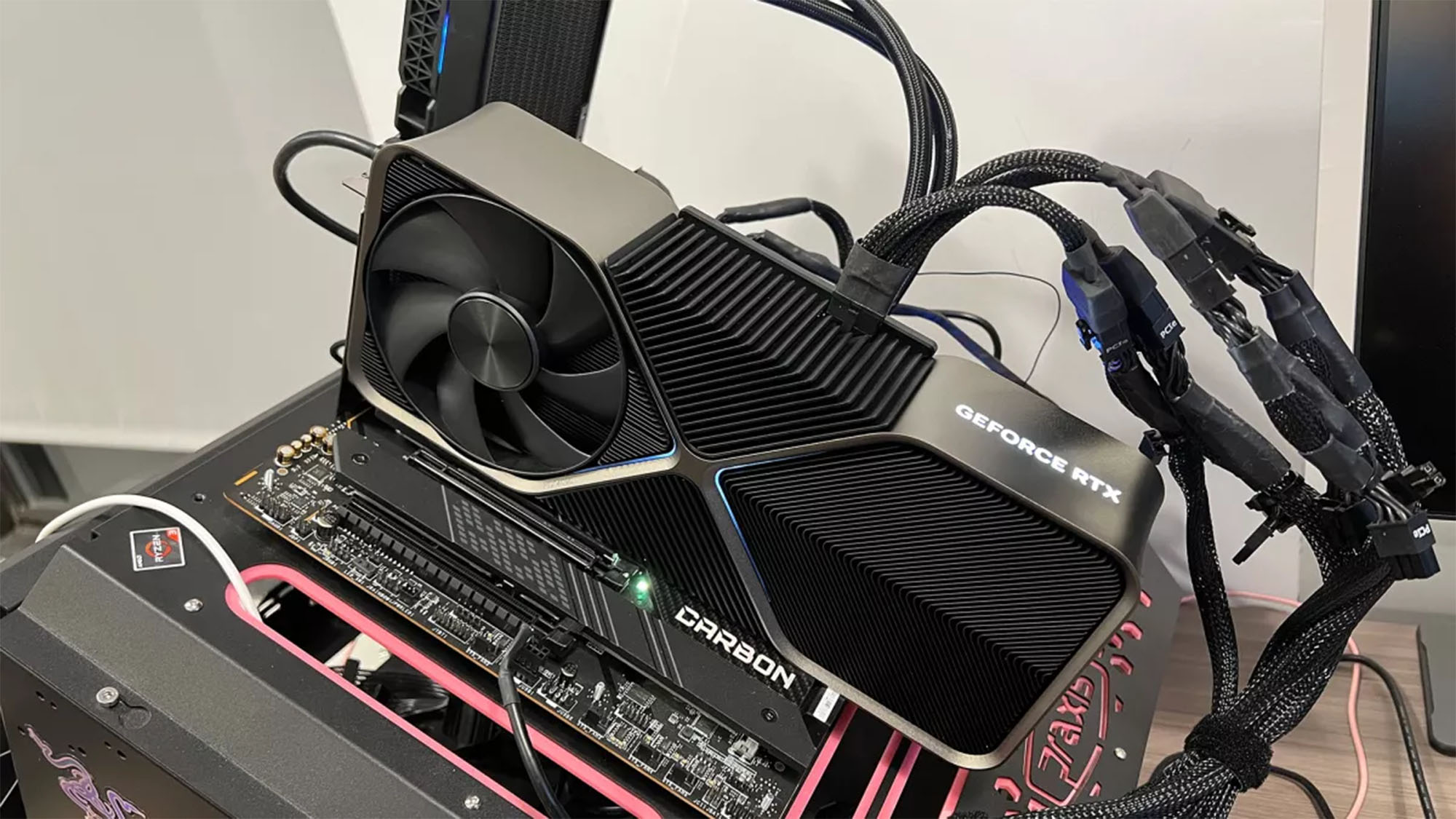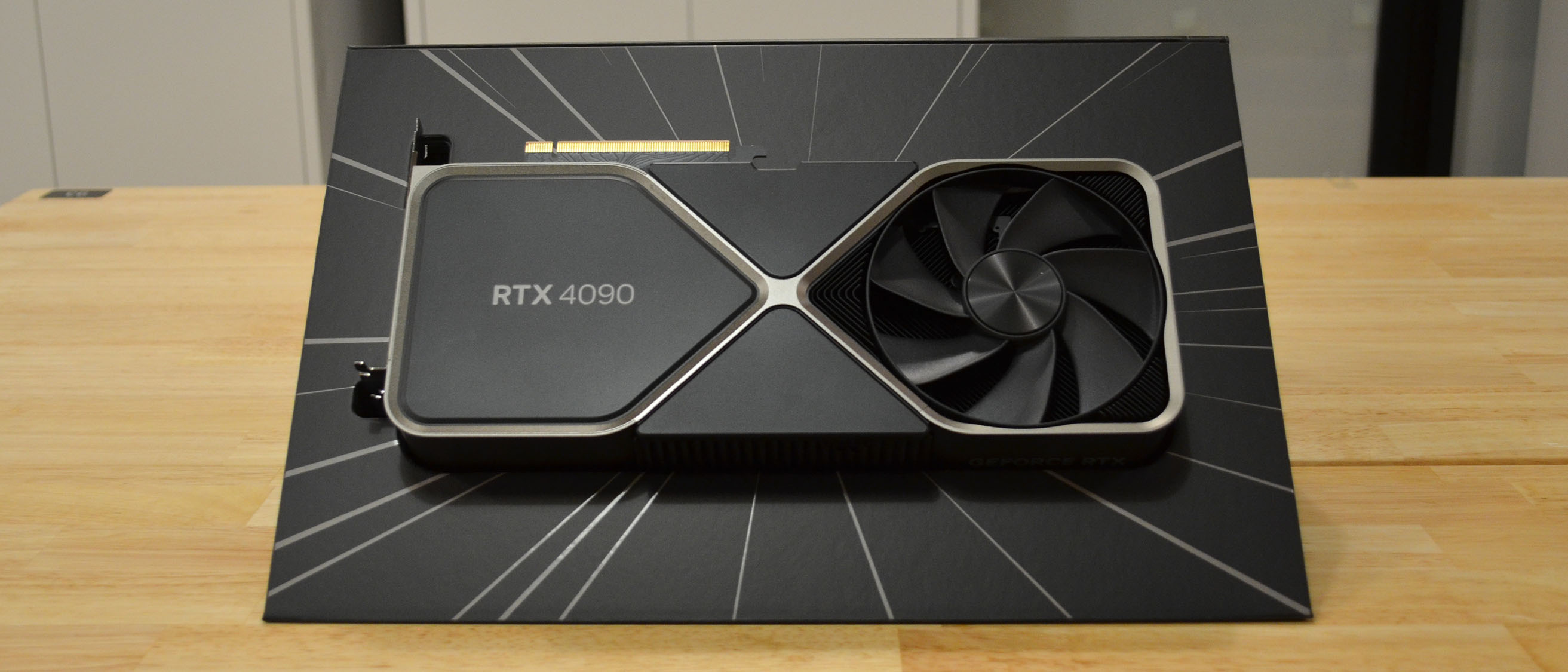GamesRadar+ Verdict
The Nvidia GeForce RTX 4090 is unarguably the best graphics card ever made for the consumer market, but at $1,600 and so powerful that the rest of your PC might not be able to keep up, this really is for those who have a high-end rig to put it in. If that’s you, though, this graphics card has no equal.
Pros
- +
Best in class performance
- +
Not as expensive as the RTX 3090 Ti
- +
DLSS 3 with Frame Generation is incredible
Cons
- -
Still wildly expensive compared to other GPUs
- -
12VHPWR power connection
- -
CPU might throttle real-world performance
Why you can trust GamesRadar+
The Nvidia GeForce RTX 4090 is unquestionably the most powerful GPU that a PC gamer can buy, offering an incredible gen-on-gen performance improvement over the RTX 3090 and even putting the Nvidia GeForce RTX 3090 Ti to shame.
There’s even a case to be made that the Founders Edition’s $1,599 / £1,599 MSRP offers a compelling value as the card’s performance-to-price ratio is much better than the RTX 3090 or RTX 3090 Ti. And unlike those cards, the RTX 4090 stacks up very well against other next-gen cards it’s competing against, though it still loses out to the likes of the RTX 4070 Ti and the AMD Radeon RX 7900 XTX.
Still, for raw performance, the Nvidia GeForce RTX 4090 has no equal. But just like trying to put a race car engine into a Fiat hatchback, the best graphics card on the market might just be too powerful for a lot of gamers to really take advantage of.
Design

The Nvidia RTX 4090 Founders Edition will look very familiar to anyone who has been staring at and refreshing Nvidia’s shop page in the last couple of years hoping to buy a new GPU.
Featuring the same silver-trim-and-black-heat-sink design of its predecessor, it still sports two fans, one on the front and one on the back, and it is noticeably bigger than the RTX 3090. It’s a chonky boi, for sure, and it’s the first graphics card I’ve tested that absolutely must have a GPU support bracket of some kind to secure it inside your case. Fortunately, there are screw holes along the back of the card where a bracket can be installed, which is really the only other visible difference between the RTX 3090 and RTX 4090.
CPU: AMD Ryzen 7 5800X3D
CPU Cooler: Corsair iCue H150i Elite Capellix 360mm AIO
RAM: Corsair Vengeance LED DDR4-3200
Motherboard: Gigabyte Aorus Master X570
SSD: Samsung 980 Pro 1TB NVMe M.2 SSD
Power Supply: Corsair AX1000
Case: Praxis Wetbench
Nvidia goes with a 12VHPWR power connector rather than the standard 8-pin ATX 2.0 connectors used by many other graphics cards, and you may have heard some concerns about these cables shorting out and melting. The official explanation is essentially user error - namely that users did not properly secure the power connector to the card before using it - and given that we haven’t seen many other reports of additional problems in the months since the initial controversy, it looks like the concerns over the 16-pin connector have been largely put to rest.
That doesn’t mean that the four-to-one 16-pin adapter that comes with the card isn’t a nightmare when it comes to cable management. If you have an ATX 3.0 power supply with a single 16-pin cable, things will be much easier, but this also starts stacking on additional expense on top of the RTX 4090’s luxury pricing.

Features
The RTX 4090 is Nvidia’s first card using the new Lovelace GPU architecture, which implements fourth-gen tensor cores and third-gen ray tracing cores to incredible effect.
Whereas the RTX 3090 Ti’s GA102 GPU was fabbed on Samsung’s 8nm process node, the RTX 4090’s AD102 was produced on TSMC’s 4nm node, so it is both much faster as well as being much more energy efficient. Both cards have a TDP of 450W, so the amount of performance Nvidia is able to squeeze out of the same amount of power draw is remarkable.
As far as speed goes, the RTX 4090 has a base clock of 2,235 MHz, and a boost clock of 2,520 Mhz, compared to the RTX 3090 Ti’s 1,560 MHz base clock and 1,860 boost. Add to this a 52.38% increase in CUDA cores over the RTX 3090 Ti (16,384 to 10,752), and the incredible performance gains made by the RTX 4090 aren’t as surprising as they appear.

The RTX 4090 also has 24GB GDDR6X VRAM running at 1,313 MHz with a memory bandwidth of 1,008 GB/s and an effective memory speed of 21 Gbps, which is identical to the RTX 3090 Ti. Still, the size and speed of the available memory make this one of the few cards that could truly handle 8K gaming at this point. Unfortunately, it is limited to 60Hz at 8K due to it only having DisplayPort 1.4a output, as opposed to the AMD RX 7900 XTX, which uses DisplayPort 2.1, which maxes out at 165Hz for 8K.
What the RX 7900 XTX doesn’t have though is Nvidia DLSS 3 with full frame generation, which is a huge improvement over DLSS 2.0. It hasn’t been implemented in a whole lot of games yet, but in the limited number of games like Cyberpunk 2077 where I’ve been able to test it fully, frame generation can give you a roughly 2x increase in frames per second over DLSS 2.0, which was already incredible tech, to begin with.
Performance
On its gaming merits, the Nvidia RTX 4090 runs circles around the competition. It is the only graphics card on the market that can run the best PC games in native 4K resolution with ray tracing with no upscaling and get something approaching a decent frame rate. And DLSS 3 technology takes this even further, at least in those games where the tech is implemented.

And while the MSRP for the Founders Edition card I reviewed is $1,599 / £1,599, this card actually offers a very compelling performance-to-price ratio, offering many more frames per second for every dollar/pound spent than its predecessor.
Fire Strike Extreme (1440p): 36,594
Fire Strike Ultra (2160p): 23,975
Time Spy (1440p): 27,207
Time Spy Extreme (4K): 13,982
Port Royal: 25,490
No matter what game we threw at the RTX 4090, it managed to score between 25 to 50 frames per second more than either the RTX 4080 or RX 7900 XTX, and this gap only widens when it comes to ray tracing performance. In fact, the RTX 4090 is the only graphics card that can run Cyberpunk 2077 at 4K with every setting maxed out with ray tracing set to Psycho and get above 30 fps without using DLSS.
Overall, I tested the RTX 4090 across several in-game benchmarks, including Cyberpunk 2077, Hitman 3, and Guardians of the Galaxy, and found that, on average, it put out about 120 fps at 4K with the highest settings without DLSS. This puts it about 16% faster than the RTX 4080 (103 fps), about 52% faster than the RTX 3090 Ti (79 fps), and about 62% faster than the RTX 4070 Ti (74 fps). It is also about 33% faster than the best AMD graphics card, the RX 7900 XTX (90 fps).
Cyberpunk 2077:
2160p Ultra (Psycho ray tracing) DLSS on: 48/105 fps (Min/Avg)
2160p Ultra (Psycho ray tracing) DLSS off: 30/39 fps (Min/Avg)
1440p Ultra (Psycho ray tracing) DLSS on: 48/105 fps (Min/Avg)
1440p Ultra (Psycho ray tracing) DLSS off: 44/75 fps (Min/Avg)
Hitman 3 (Dubai):
2160p Ultra (Extreme ray tracing) DLSS on: 91/146 fps (Min/Avg)
2160p Ultra (Extreme ray tracing) DLSS off: 41/65 fps (Min/Avg)
1440p Ultra (Extreme ray tracing) DLSS on: 101/149 fps (Min/Avg)
1440p Ultra (Extreme ray tracing) DLSS off: 93/116 fps (Min/Avg)
Guardians of the Galaxy:
2160p Ultra (ray tracing) DLSS on: 83/152 fps (Min/Avg)
2160p Ultra (ray tracing) DLSS off: 74/98 fps (Min/Avg)
1440p Ultra (ray tracing) DLSS on: 84/154 fps (Min/Avg)
1440p Ultra (ray tracing) DLSS off: 77/154 fps (Min/Avg)
All games tested at their highest possible settings; DLSS set to 'Performance' mode unless otherwise stated.
In short, the RTX 4090 is the best graphics card for gaming you can buy. Unfortunately, it is literally so powerful that on a number of games the GPU was far outpacing what the AMD Ryzen 7 5800X3D in my test bench was capable of, so the performance on less GPU-intensive games - one of the best CPUs for gaming - like Tiny Tina’s Wonderland was effectively CPU-locked, with even Guardians of the Galaxy with full ray-tracing on ultra settings running into a rather hard ceiling regardless of resolution.
This is a problem with any graphics card (at least theoretically), but it’s a problem that a lot of gamers who might not have the best processor in their rig are going to encounter a lot more often with the RTX 4090. This presents a real problem if you’re looking to upgrade an older GPU but have a Ryzen 3000-series or ninth-gen Intel chip, and it might make more sense, in that case, to go for a less powerful Lovelace or RDNA 3 graphics card like the Nvidia RTX 4070 Ti or the AMD RX 7900 XT than go all in on the RTX 4090.
It should also go without saying that the RTX 4090 is meant to power the most graphically demanding content, and that if we’re being honest, this is only a gaming graphics card by virtue of the very tight overlap between gaming and 3D content creation that this card is actually designed for.
This is Pixar or James Cameron’s graphics card more than it is for even the most fanatical 1% of gamers out there, so unless you absolutely must have the fastest frame rates possible in Cyberpunk 2077, you are probably better off looking a bit lower down the GPU stack for your gaming PC, especially if you spend the vast majority of your time playing less demanding indie games or esports titles.

Should you buy the Nvidia RTX 4090?
All that said, if you want the very best and you’re willing to splurge on a whole new setup with the latest processors, DDR5 RAM, and all the rest, then the Nvidia RTX 4090 is absolutely worth the premium investment and will likely be chewing through the most advanced PC games for the rest of the decade without breaking a sweat.
How we tested the Nvidia RTX 4090
To get the best measure of the Nvidia RTX 4090’s performance in both raw and real-world terms, I put the RTX 4090 through an extensive regimen of benchmark tests and actual gameplay. This includes synthetic tests like 3DMark and Blender’s benchmarking tool, as well as several in-game benchmarks for Cyberpunk 2077, Hitman 3, and Guardians of the Galaxy with the highest settings possible. I tested both 1440p and 4K gaming performance, with and without DLSS upscaling, and compared it to similar results from the last-generation flagship RTX 3090 Ti, as well as the current-gen Nvidia and AMD cards to see how well the RTX 4090 stacked up against rivals cards.
You can find out more about how we test graphics cards in our full GamesRadar Hardware Policy.
If you're looking for other top components with which to upgrade your rig this year, then check out our rundowns of the best RAM for gaming and best SSD for gaming that money can buy right now.




